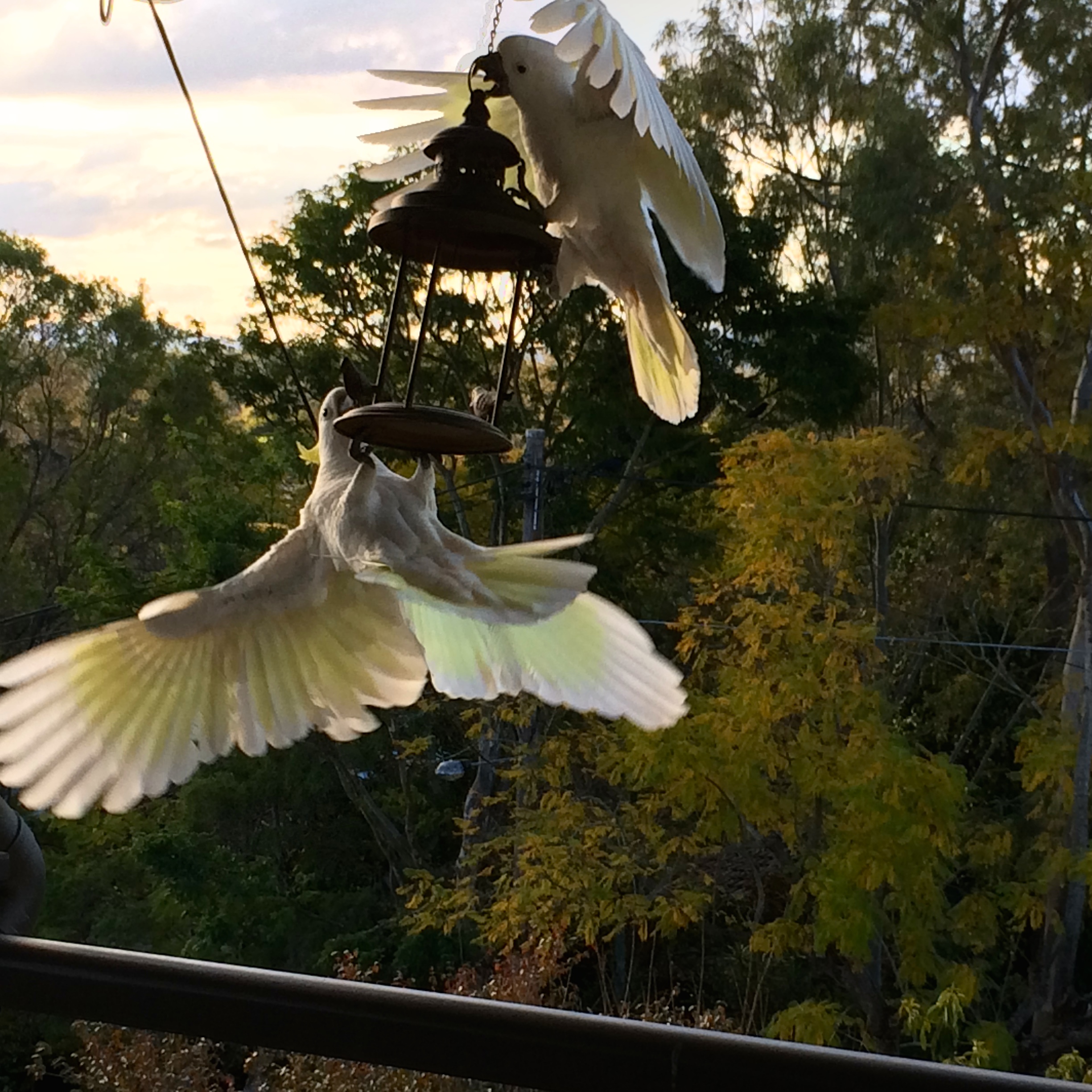A few months ago, near the beginning of my year-long project in belonging, we hung a metal bird feeder off the balcony. My eight-year old daughter chose the feeder which is stylistically beautiful but perhaps not the most practical. The aim was to see whether we could attract native birds and if so, would proximity to lorikeets, parrots, pigeons and cockatoos give me a sense of belonging?
If I listen to Renee Chapman, an ecologist and PhD candidate here in Brisbane, there is hope for me both with birds and belonging. Chapman started studying human interactions with ducks and duck feeding around the world in 2009. When she began she didn’t like birds. She preferred small mammals like bilbies and stick-nest rats. Now though, she’s fascinated with birds.”I absolutely love ducks. I’m obsessed with ducks and any sort of water birds,” she says as we walk around a pond in Brisbane’s east. ”I think it’s because I was forced to work out what they are.”
Chapman lifts her arm with the Aboriginal kangaroo tracks tattoo, and she points out wood ducks and dabbling ducks, muscovy ducks, the Pacific black duck and even domestic ducks that look like they’ve wandered out of a Beatrix Potter book.Ambling along the wooden walkway over the pond and marshlands, we come to an elderly couple sitting on a bench with their grandchild and we stop to chat. They often come to feed the ducks and enjoy the peacefulness. Not only do they feel a connection with the birds when they come but they also connect with other people here.Chapman agrees. According to her research in the UK and Australia, people feed wildlife for the same reasons: they want to care, love, support and help the wildlife. They’re reaching out to connect.
I ask Chapman, who‘s working in this new field of human ecology, whether feeding the birds will make me feel more connected or more like I belong here.”I think it might, but oddly enough I’m going to say that it might only be on reflection. When you leave it might make you feel like you had belonged,” she says. I might be ”connected by memory” she adds.
Back at our blue and white Queenslander, I watch the timid pale-headed rosella at the bird feeder and take in the open-ended view to western hills. It’s a view I appreciate every day, especially when I have conflicting feelings about Australia.The birds took their time scouting out our feeder, trying to figure out whether our seed was better or worse than the neighbours. They were tentative. A pigeon, a common myna, some noisy miners. Then one afternoon the girls and I found a pair of pale-headed rosellas taking turns at the feeder. We sat and watched them as they spewed seeds and gurgled in the afternoon sun.
Lately, though it seems our bird feeder may have reached tipping point.
Yesterday we had six sulphur-crested cockatoos hanging hungrily off various parts of the house. They were not timid and I had the distinct impression that our house was now their house. One pale-headed rosella sat on a wire waiting patiently for a while then left.The cockatoos squawked and fluttered and tipped the feeder over in a frenzy of white plumage, dumping seed on the balcony and the ground below. Our starving springer spaniel — oblivious to his bird-dog DNA — ran downstairs to hoover up the seeds. Two cockatoos hung upside-down from the eaves looking at me and the girls, and another one seemed to be tasting the cable TV wire.It makes me wonder: just who is getting a sense of belonging here?





